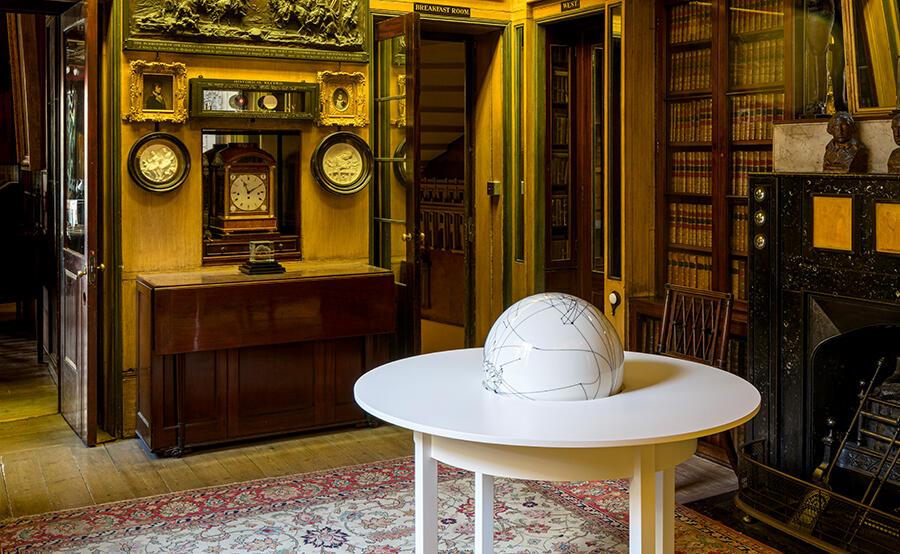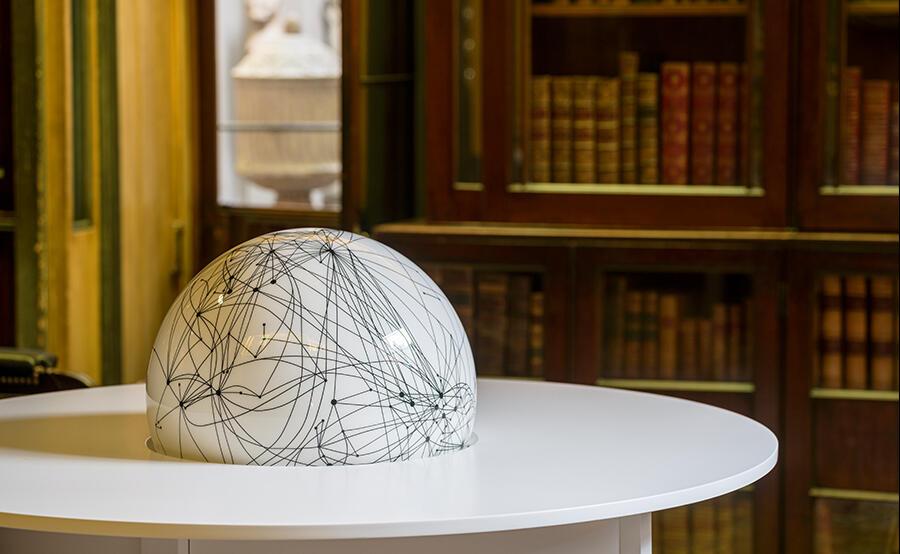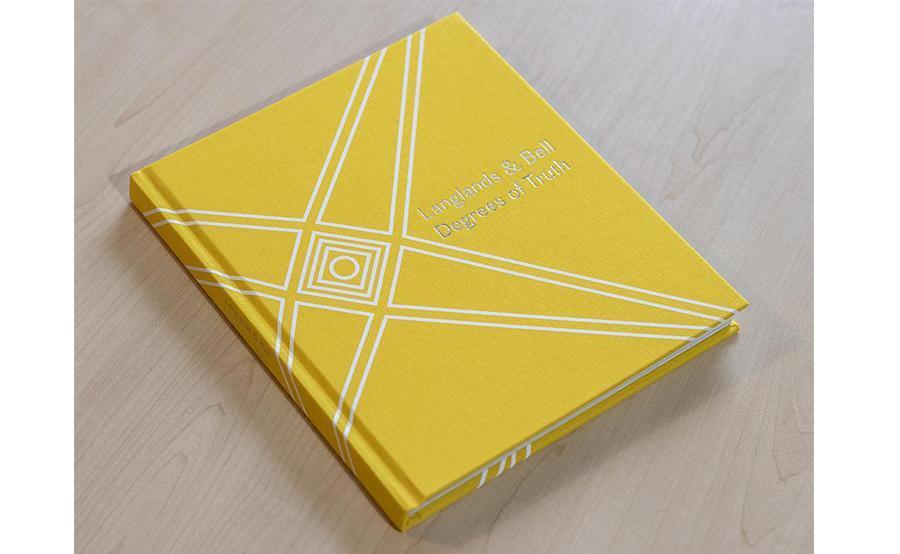Globe Table, 2020. Artists' collection. Installation view in the No. 13 Breakfast Room, photo by Gareth Gardner
Artists Langlands & Bell discuss their work Globe Table (2020) with exhibition curator Owen Hopkins in an excerpt from the publication for our current exhibition Langlands & Bell: Degrees of Truth, which is currently available to view online.
"When systems stop operating as “normal” we suddenly realise how reliant we have all become - especially a system as all encompassing and far ranging as the global aviation system and international travel," say the artists.
"Although the global pandemic may have curtailed our physical interactions by air from city to city or on the ground from person to person, we can still travel with our imagination and for the time being at least, many other systems and networks remain largely unaffected. They offer us alternative means of communicating and we’re now more motivated than ever to explore their potential as fully as possible and develop new communication strategies."
Installed at the centre of the No. 13 Breakfast Room, Globe Table (2020) with its themes of international travel and communication, is all the more relevant in the context of the Covid-19 pandemic. Though the Museum's shop is currently closed due to lockdown, the exhibition book for Langlands & Bell: Degrees of Truth is still available to pre-order online if you would like to read more.

OH: The notion of travel is at the very core of the Museum. It’s both the means through which all these objects were brought together and it’s also the sensation they are intended to evoke as visitors enter into the heterotopic space that constitutes the Museum. There’s perhaps an inherent challenge in putting one’s finger on something that is by its very nature transient. It’s been a recurring interest of yours, which you’ve explored in the Air Routes series – which in a sense are maps formed by plotting the routes taken by commercial aeroplanes across the UK, Europe and the world.
L&B: The Air Routes are something we’ve worked with quite regularly since 1989. They’re about international communication and exchange, the arrangement of routes of access and their visual projections. They are the architecture of the sky.
They are based in reality, but they also appear very abstract the first time you see them – there’s little sense of the familiar political geography and physical geography. You’re not sure what you’re looking at, and then it begins to take shape.
The new work we’ve made for the 13 Breakfast Room continues the series. It’s a circular table with a globe that can be moved by one or two people in any direction. It’s not rotating on one axis. It points everywhere at once.

OH: It powerfully conveys this is new global geography. It presents a world of hubs and connections between them in which are encoded economic, cultural and social relations. I’m interested in how you’ve applied this ongoing enquiry to a globe table, a quite familiar type of furniture which is redolent of historic settings.
L&B: Visitors are not normally supposed to touch the exhibits, but, in this case, they’re being invited to do so. The Breakfast Room is the space around which the Museum turns, from there you can branch out and follow whichever route you like. We were very struck by the room’s extraordinary domed ceiling. It was a new kind of dome that Soane developed. And, of course, domes, architecturally, are symbolic of the celestial sphere and the heavens and what’s going on above us. There’s a connection in that sense between the globe and the dome. The many mirrors in the room create this kind of strange surveillance.
OH: You appear in multiple mirrors at once. It’s like the way we exist in the online world: the fragmentation of ourselves into an infinitude of reflections. I’m interested in the way the presence of your work in this historic interior – and the dialogue established between the two – unlocks a whole series of interpretations of the space that would be hard to sustain without it.

Support the Museum
While the Soane Museum is temporarily closed, we are ever more reliant on your support to protect and maintain Sir John Soane’s house and collection. Please consider making a donation towards the Museum's work, or contact us at development@soane.org.uk if you would like to speak with us about how your support will help.